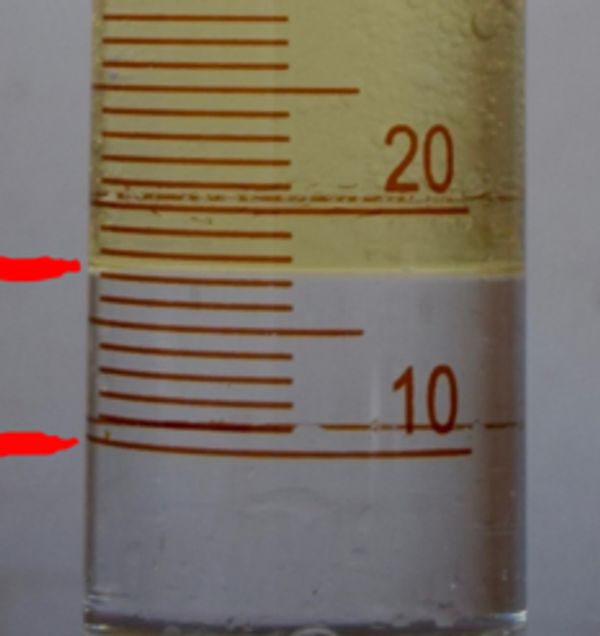Phase Separation in Ethanol Blended Gasolines
Phase separation in modern day gasolines containing Ethanol is a major problem that we battle with everyday. As a small car storage business, phase separation in automobile tanks sitting for extended periods of time poses a real threat to our customers’ vehicles. It is not uncommon for customers to store their vehicles for an average of a year plus, which is far over the recommended shelf life (3 months) of E10 fuels. If water were to get into the fuel lines and rust the tank it is not a cheap problem to fix.
The organic chemistry behind this is quite simple—Ethanol interacts with water through hydrogen bonding. Ethanol has a polar --OH group, making it have a high affinity for water. Phase separation occurs and the more dense ethanol water layer rests on the bottom while the octane-reduced gasoline layer rests on the top.
While most people do not experience this problem due to constantly refueling their vehicle, it has become a real threat for gas motors in storage. We first came across this problem after a small generator that sat all summer long would not start. Fortunately on the small generator we were able to drain the spoiled fuel simple enough and see the distinct layers in the bucket.
Preventing separation is certainly important for us in the long-term car storage business; however, it is also very important for average people to consider when storing their lawnmower for the winter or any other combustion engines that sit for long periods of time. The few tips we have learned: store with a full tank if impossible to empty entirely (empty tanks leave more room for condensation and moisture), store indoors where temperatures vary less (again less condensation), and add a fuel stabilizer (which we do before every vehicle goes into storage).


A

B

C

D
A (Untreated E10 Fuel)
A (Untreated E10 Fuel)
A (Untreated E10 Fuel)
90 mL of gasoline was mixed with 10 mL of water which resulted in a 17 mL ethanol water layer on the bottom
B (Treated E10 Fuel)
A (Untreated E10 Fuel)
A (Untreated E10 Fuel)
90 mL of fuel stabilizer treated gasoline was mixed with 10 mL of water which resulted in a 13 mL ethanol water layer on the bottom
C (Untreated E10 Fuel)
C (Untreated E10 Fuel)
C (Untreated E10 Fuel)
Without addition of a fuel stabilizer when 10 mL of water is added to contaminate the fuel an additional 7 mL of ethanol is pulled from the fuel leaving an octane reduced fuel at the top and a clear ethanol water mixture at the bottom
D (Treated E10 Fuel)
C (Untreated E10 Fuel)
C (Untreated E10 Fuel)
With addition of a fuel stabilizer when 10 mL of water is added to contaminate the fuel only an additional 3 mL of ethanol is pulled from the fuel leaving an octane reduced fuel at the top and a clear ethanol water mixture at the bottom
Sites to read up more on the subject:
Copyright © 2024 Leesburg Car Storage - All Rights Reserved.